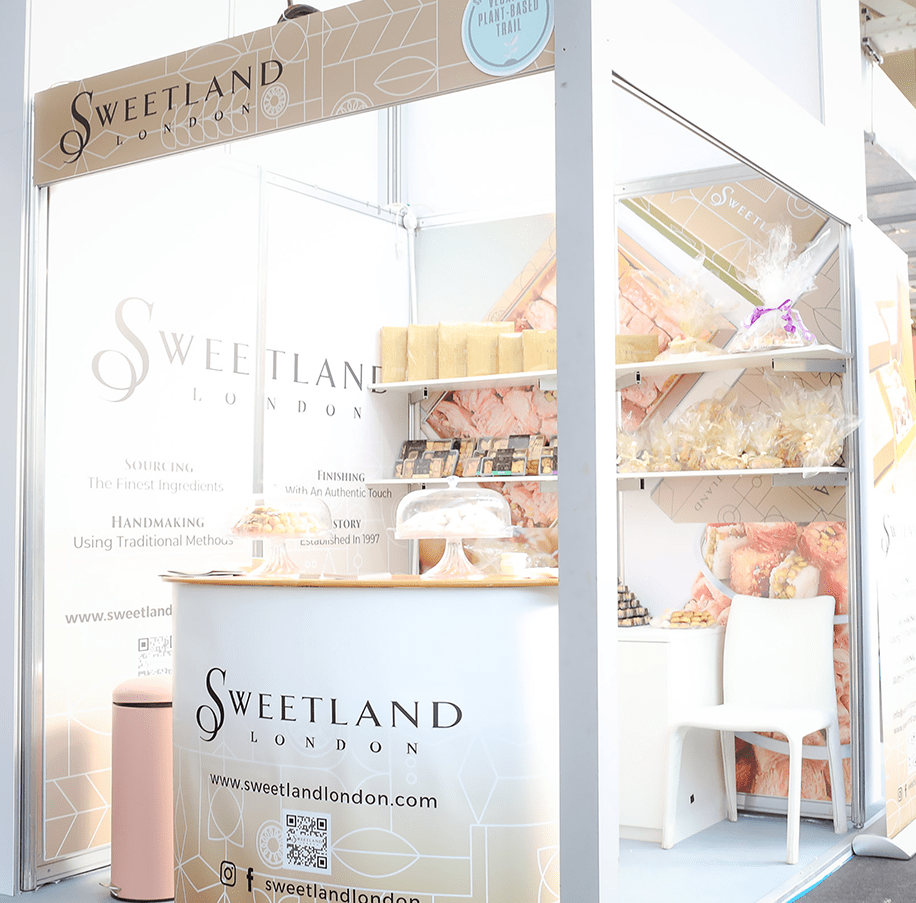Shell Scheme Graphics:Designing for Global Cultural Sensitivity
Ensure your exhibition panels speak to global audiences with tips on cultural sensitivity, design elements, and avoiding common mistakes.

Businesses are more connected than ever in today's global marketplace. Exhibitions and trade shows often attract international audiences, making it important for companies to communicate effectively across cultures. One key part of this communication is visual, especially through your shell scheme graphics and exhibition panels.
Cultural sensitivity is no longer optional; it’s a necessity. If your exhibition graphics unintentionally offend or confuse your audience, your brand could leave the wrong impression. This blog explores how you can design shell scheme graphics that are not only visually appealing but also respectful and inclusive of cultural differences.
Why Cultural Sensitivity Matters in Exhibition Design
Global exhibitions bring together people from many countries and cultures. While this creates new opportunities for networking and business, it also presents challenges when it comes to design.
A graphic element that feels appropriate in one country might carry a very different meaning in another. For instance, a colour considered lucky in one culture might symbolise mourning in another. These small details matter, especially when your shell scheme is the first thing people see when walking past your stand.
Designing with cultural awareness not only prevents misunderstandings but also shows respect for your audience. It makes people feel more welcomed, included, and valued, which is exactly the kind of experience that drives positive engagement at an exhibition.
What to Consider When Designing Shell Scheme Graphics
Creating culturally sensitive exhibition panels and graphics starts with understanding the key elements that can vary across cultures. Here are some things to think about:
1. Colour
Colours carry strong meanings in different cultures. For example:
- Red symbolises luck and celebration in China, but can mean danger or warning in Western cultures.
- White often symbolises purity in the UK, but in parts of Asia, it is linked to mourning.
It’s important to research the cultural meanings of your colour palette before finalising your design.
2. Imagery and Symbols
Images, gestures, and icons can all have different interpretations. A hand gesture seen as friendly in one place may be offensive elsewhere. Religious or sacred symbols should be used with care, or avoided altogether if you are unsure of their context.
Also, be mindful when using animals, buildings, or traditional patterns, as these can have very specific cultural meanings.
3. Language and Typography
If you are exhibiting in a country where English isn’t the primary language, consider having your main messages translated. Also, pay attention to the direction of text – for example, Arabic and Hebrew are read from right to left.
When choosing fonts, avoid overly decorative styles that may be difficult to read, especially if they include unfamiliar characters or symbols.
4. Representation in People and Clothing
If you use stock photos of people, make sure they represent the audience you are speaking to. Try to show diversity in age, ethnicity, and gender roles. Avoid stereotypes, and aim for genuine, respectful representation.
Clothing is another important area – images should reflect local dress customs if possible, especially in regions where modesty is highly valued.
Common Cultural Mistakes in Exhibition Design – And How to Avoid Them
Even well-intentioned brands can make mistakes when designing exhibition materials for global audiences. Here are some of the most common errors and how to avoid them:
Using Stereotypes in Imagery
One of the biggest pitfalls is relying on clichés. Using images of landmarks, traditional clothing, or stereotypical activities can feel outdated or even patronising. Instead, aim for authentic and modern representations.
Ignoring Text Translation Quality
Auto-translation tools can be helpful, but they’re not always accurate. Poor translations may lead to confusion or come across as careless. Always get your content checked by a native speaker, preferably someone familiar with marketing language.
Overcomplicating the Design
In trying to impress, some businesses add too many visual elements. This can result in clutter and make your message hard to follow. Keep your shell scheme graphics clean and focused. Less is often more.
Lack of Localisation
Using UK contact details, currency, or spelling in materials meant for an international audience can be a small but noticeable oversight. Tailor your content to the local audience whenever possible, even in small details.
Ignoring Cultural Sensitivities in Symbols and Colours
Certain religious, historical, or political references might be sensitive in specific regions. If you are unsure about a symbol or colour, it’s better to choose a neutral alternative. Consulting with someone from that culture can be a great help.
Practical Tips for Designing Culturally Sensitive Shell Scheme Graphics
Now that you understand what to consider, here are some practical tips to guide your design process:
- Do Your Research: Understand the local culture and customs of the region where you will exhibit.
- Avoid Stereotypes: Be careful not to overgeneralise or use clichés.
- Use Universal Themes: Nature, innovation, and human connection tend to be widely understood and accepted.
- Test Your Design: Get feedback from people of different cultural backgrounds before going to print.
- Work with Local Experts: If possible, involve local designers or cultural advisors to review your work.
- Keep it Simple: In case you’re unsure about specific cultural references, it’s always safe to go with clean and simple visuals.
A Real-World Scenario
Imagine a UK-based health tech company preparing for a medical technology expo in Dubai. Instead of using stock images of people in Western business attire, they chose photos reflecting a more diverse group, including individuals wearing traditional Middle Eastern clothing.
They also added Arabic translations alongside their English messaging and kept their design minimal and respectful. The result? Their shell scheme graphics attracted more interest and positive feedback than previous shows, not just for the product but for the respectful presentation.
Useful Resources for Global Exhibition Design
If you're new to designing with global audiences in mind, here are some tools and resources to help:
- Google Translate – for basic language translation (but always double-check with a native speaker).
- Inclusive Stock Photo Libraries – such as Pexels, Nappy, and Unsplash.
- Cultural Colour Charts – to understand colour meanings around the world.
- International Design Bodies – like AIGA or IFI (International Federation of Interior Architects/Designers) for global design trends and ethics.
Conclusion
Designing with cultural sensitivity isn’t about being perfect – it’s about being thoughtful, respectful, and inclusive. By considering language, customs, and values, your shell scheme graphics and exhibition panels can make a strong and positive impact. It’s not just about how your exhibition stand looks, but how it makes people feel. When visitors feel seen and respected, they’re more likely to connect with your brand. Board Printing Company offers expertly designed, culturally aware exhibition graphics to help you create a welcoming space that resonates with diverse audiences, wherever your event takes place.
What's Your Reaction?



















